- You are here:
- Home
- Funded Projects
Funded Projects
Nanophotonic-based Quantum Sensing and Simulation
- Programa de Investigación FUNDAMENTOS de la Fundación BBVA
- Funding agency: Fundación BBVA
- Duration:
- Principal Investigator: A. I. Fernández-Domínguez, Alejandro González Tudela
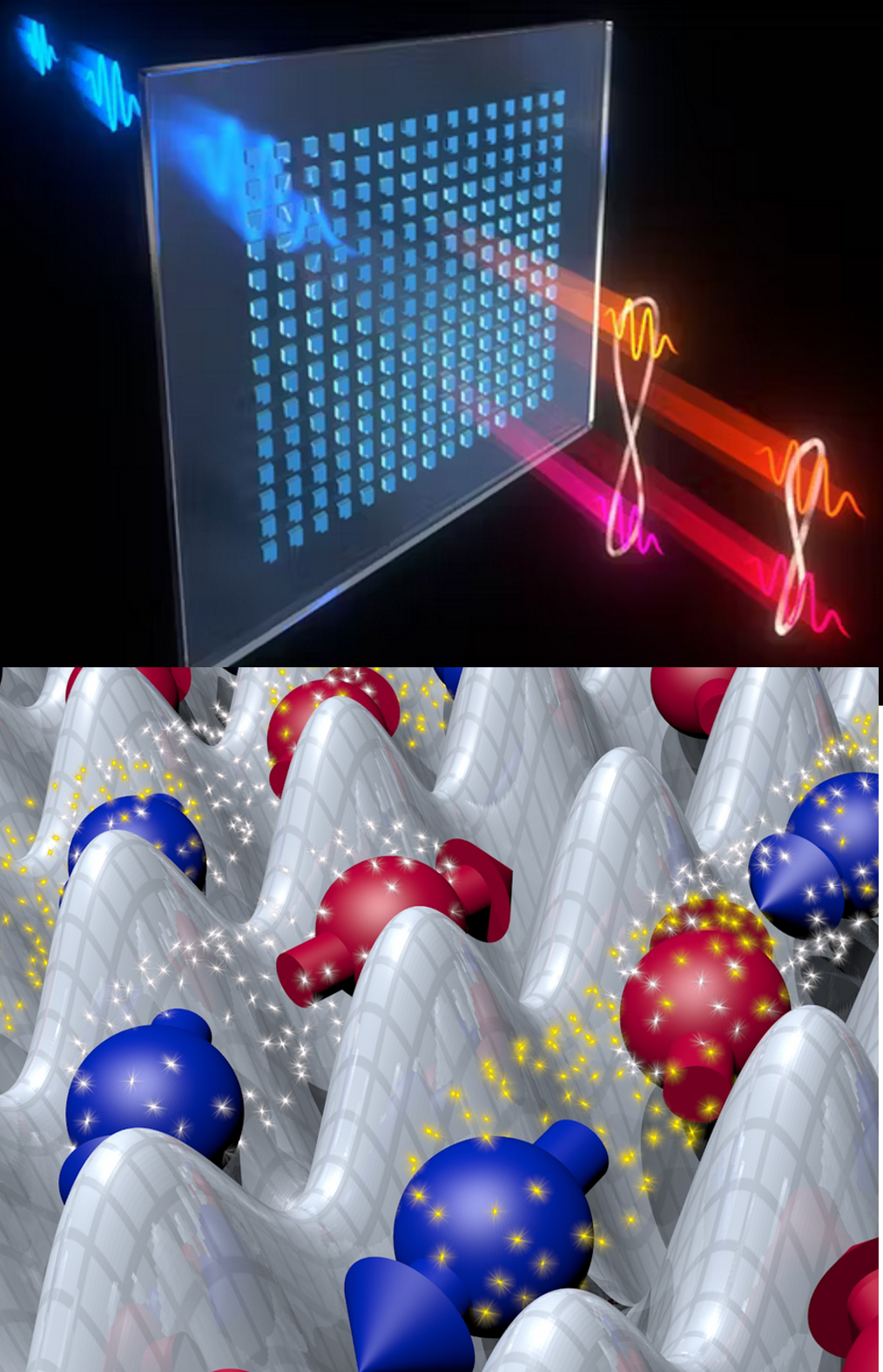
This project, entitled NanoPhotonic-based Quantum Sensing and Simulation (NPhoQuSS), explores quantum nanophotonic systems as a scalable alternative platform for quantum technologies. These systems integrate quantum emitters, such as molecules, quantum dots, and vacancy centers, with precisely structured nanophotonic architectures, including plasmonic cavities, photonic crystals and metamaterials. This approach overcomes limitations of conventional quantum hardware (trapped ions, superconducting circuits, or neutral atoms) by enabling enhanced light-matter interactions, ultrafast quantum operation, and subwavelength-scale control. NPhoQuSS focuses on two key areas: quantum sensing and quantum simulation. By leveraging quantum coherence, entanglement, and engineered correlations, the project aims to push the limits of precision measurements and computational power in current technology. The timeliness of NPhoQuSS is evident as the first quantum nanophotonic prototypes are being experimentally realized, demonstrating strong coupling in molecular systems, integration of 2D materials into cavities, and controlled quantum metamaterials. The project will develop innovative strategies for engineering large networks of quantum emitters integrated with photonic devices, ensuring precise quantum control and efficient quantum information transfer. By combining expertise in quantum optics, nanophotonics, and computational modelling, the project seeks to identify new specific applications, optimize device performance, and advance the experimental realization of quantum nanophotonics technology. Addressing the challenges above requires advanced theoretical and computational tools. NPhoQuSS consortium brings together two leading research groups (UAM and CSIC) and is further strengthened by the expertise of Prof. Peter Zoller (University of Innsbruck), a world leader in quantum optics and quantum technologies.
Developing Quantum Optics in the Terahertz
- Proyecto Generación de Conocimiento
- Funding agency: Ministerio de Ciencia, Innovación y Universidades
- Duration: November 2025 –
- Principal Investigator: Diego Martín-Cano, A. I. Fernández-Domínguez
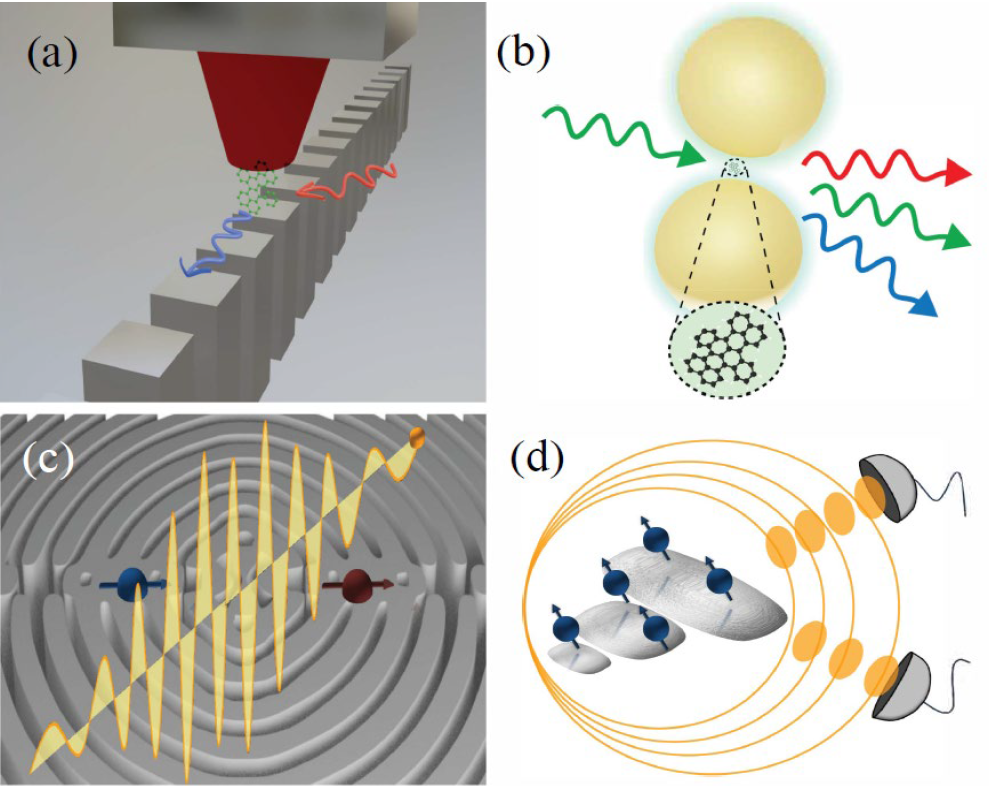
The terahertz (THz) spectrum, spanning from 0.1 to 70 THz, represents a crucial domain that bridges microwave and optical frequencies. This frequency regime enables photonic interactions with vibrational, rotational, and electronic transitions, offering immense potential for classical and quantum applications in imaging, spectroscopy, sensing, communication, and security. Despite its promise, the development of THz quantum technologies lags behind advancements in the optical and microwave domains. The key challenges include the creation of efficient sources, detectors, and compatible materials. Addressing these obstacles could enable quantum optical protocols, such as the generation and manipulation of entangled states, to leverage THz frequencies for enhanced communication security and efficient quantum computing. Additionally, quantum-enhanced sensing techniques could provide remarkable precision, opening new frontiers in biomolecular spectroscopy, non-invasive imaging, and advanced material characterization. DQUOTE gathers a team of theoretical researchers with diverse expertise to develop innovative engineering strategies for controlling and manipulating quantum states of light and matter at the nanoscale. The project combines synergistically classical electromagnetics, ab initio methods, quantum optical models, and machine learning optimization techniques, to advance THz quantum technologies by merging nanophotonic, optomechanical, and optoelectronic concepts. DQUOTE is an initiative of fundamental science focused on achieving a deeper understanding of photon-assisted quantum dynamics in ensembles of quantum emitters for applications in spectroscopy, sensing, and quantum simulation within the THz regime. The project aims to deliver precise quantum descriptions of key molecular processes in quantum spectroscopy, offering an innovative toolbox for utilizing molecular systems as quantum sensors and nonclassical light sources. Additionally, it will leverage inverse design and optimization algorithms to create nanophotonic architectures for multiqubit states. It will also develop approaches for quantum state preparation with modulated electrons and explore new methods to control THz light through the spatial dependence of photon correlations.
Mid-infrared Quantum Technology for sensing
- Digital and emerging technologies for competitiveness and fit for the green deal (EU-CAN)
- Funding agency: Horizon Europe Framework Programme
- Duration: October 2022 –
- Principal Investigator: A. I. Fernández-Domínguez, Johannes Feist
- Web: MIRAQLS
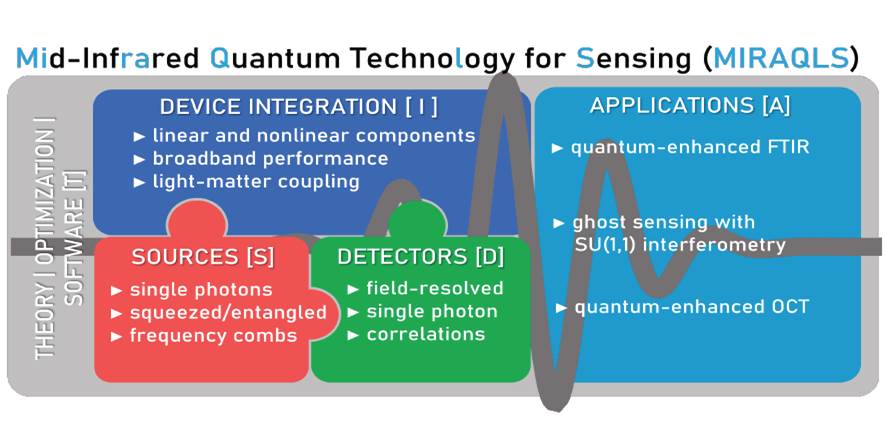
To increase our ability to sense the changes in the environment around us, we must understand how to control the quantum properties of light and matter at the fundamental limits of their interaction. As such, quantum sensing is poised to bring paradigmshifting transformations to how precision measurements are performed. Given the central role that MIR spectroscopy plays on many of the pressing issues facing modern society, there is an urgent need for systematic investments into the innovation and development of MIR quantum technologies for sensing applications. MIRAQLS brings together an interdisciplinary team of Canadian and European researchers, together with industry partners, who share a long-term vision for the development of MIR quantum photonic technologies for sensing applications. Our team combines expertise in quantum photonics, materials science, optoelectronic component development, MIR laser science and spectroscopy, biophotonics, photonic inverse design, quantum optics theory, and quantum information science, and quantum technologies. MIRAQLS aims to tackle some of the biggest challenges that have hampered the development of MIR quantum technologies, while at the same time delivering concept demonstrators, such as quantum-enhanced Fourier-transform infrared spectrometer (q-FTIR), quantum-enhanced optical coherence tomography (q-OCT) and SU(1,1) interferometry. By manipulation of quantum statistics of the input states, e.g. squeezing and entanglement operations, we aim to achieve better sensitivity bounds in comparison to the classical technology, limited to the operation at the standard quantum limit (SQL). Improvements in MIR sensing will directly translate to increased societal well-being, safety, and prosperity; it becomes indispensable in the context of the global fight against the looming climate crisis.
Accelerating Digital transition through quantum nanophotonics: platforms
- Convocatoria 2021 - Proyectos de Transición Ecológica y Transición Digital
- Funding agency: Ministerio de Ciencia e Innovación
- Duration: December 2022 – March 2026
- Principal Investigator: Diego Martín-Cano, A. I. Fernández-Domínguez
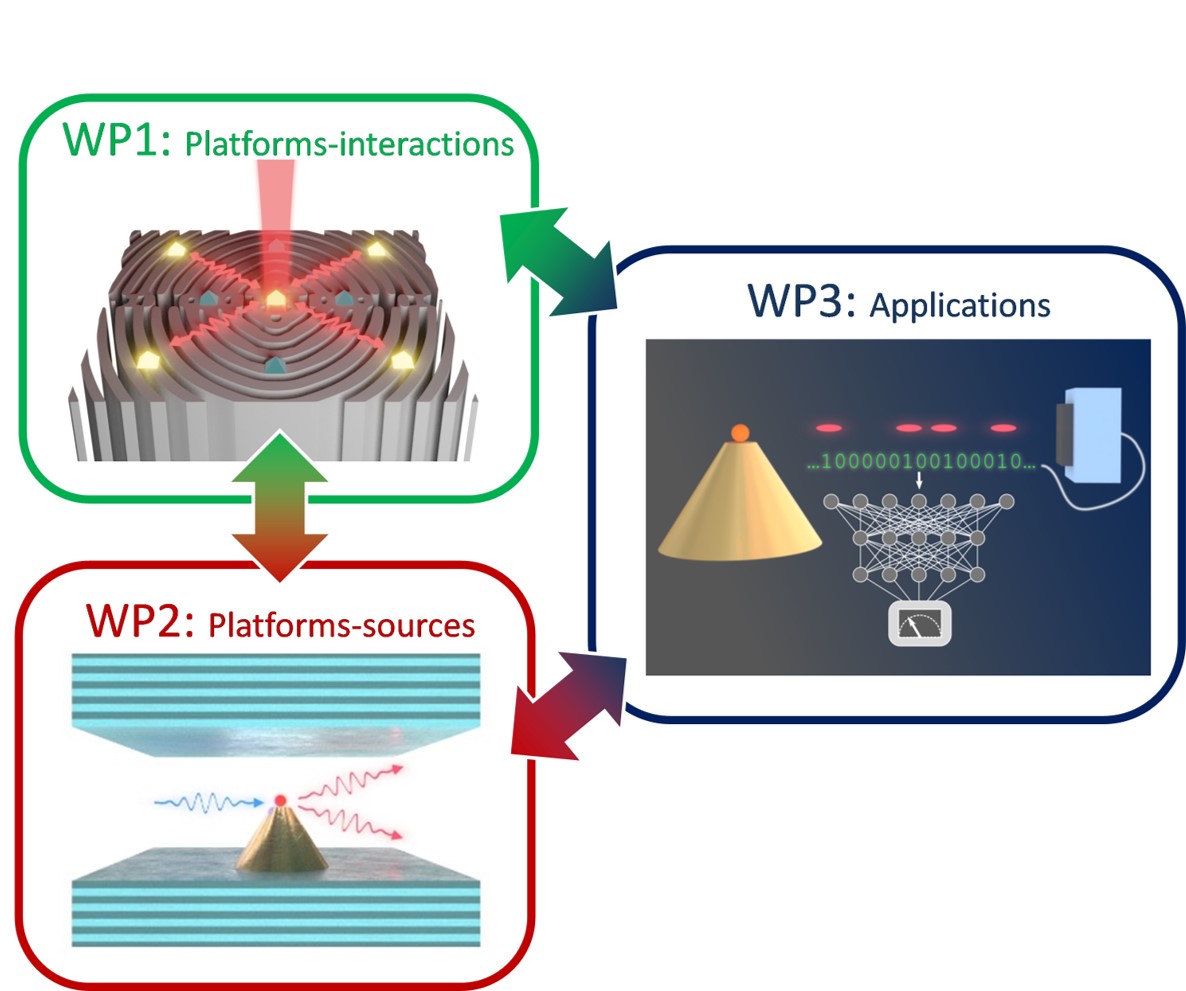
The accelerated digitalization of our society is urging for a dramatic increase of our information processing capabilities and, desirably, without boosting energy consumption nor compromising the security of data exchanges. Quantum technologies are strong candidates to satisfy these demands. Despite the amazing progress in the last years, quantum technologies still have big hurdles to overcome before becoming a truly disruptive technology for the digitalization of our society and the efficient energetic transition. One of the most pressing problems resides in the severe scalability restrictions suffered by most advanced platforms due to their size and operation speed, as well as their poor integration for daily applications. ADIQUNANO attempts to solve this challenge by designing novel quantum platforms and applications based on nanophotonics. The working hypothesis of ADIQUNANO is that nanophotonic systems, and their integration with quantum emitters, can become a key platform to scale up quantum technologies and, thus, to increase their computational power. Nanophotonic systems have the ability to control light at the nanoscale, providing a path to surpass the limitations imposed by diffraction on atomic, molecular and optical quantum technologies. Besides, they naturally increase light-matter interactions at least to the GHz-level, leading to potential higher improvements in gate speeds or quantum light generation rates. Via machine learning and inverse design techniques, the optimization of such quantum platforms can also potentially become a pillar for the future of AI. However, these exciting prospects come with their own challenges. The integration of quantum emitters in nanophotonic platforms requires innovative designs to account for non-trivial energy dispersions, and complex multimodal aspects arising from light-matter interaction at the nanoscale. The global objective is to design novel nanophotonic platforms that can be harnessed for quantum computation and quantum communication purposes. The results of this project will contribute to pave the way for more scalable quantum technologies and more prepared to process the increasingly larger amount of data generated in near future.
Quantum Nano-Engineering of Light and Matter
- Proyecto Generación de Conocimiento
- Funding agency: Ministerio de Ciencia e Innovación
- Duration: September 2022 – April 2026
- Principal Investigator: A. I. Fernández-Domínguez, Diego Martín-Cano
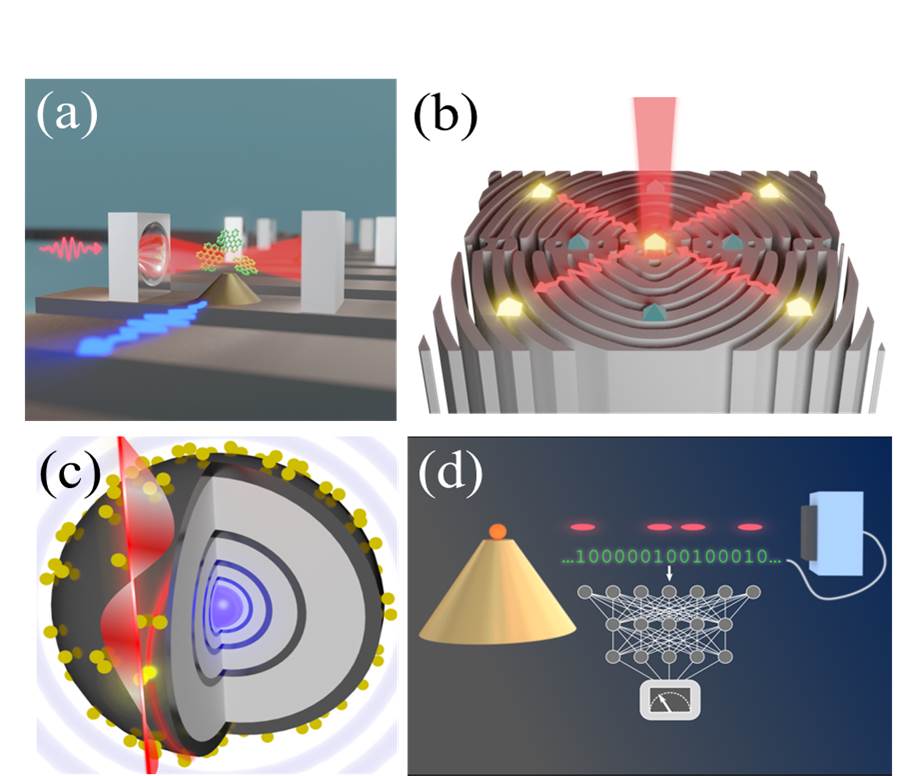
The development of novel quantum technologies is a primordial objective within the scientific strategy of the European Union, with the goal of advancing crucial applications beyond their current classical limits and tackling some of the biggest technological challenges of current society. The key potential of quantum technologies lies in the exploitation of quantum superpositions and correlations emerging in material or optical states with no classical analogue. The aim in this context therefore consists in devising and implementing devices that exploit these unique quantum features in different technological functionalities.
QENIGMA brings together a team of theoretical researchers with complementary expertise with the goal of conceiving and designing a set of engineering strategies to control and manipulate quantum states of light and matter at the nanoscale. Classical electromagnetics approaches, ab initio methods, quantum optical models and machine learning and optimization techniques will be implemented and synergistically combined with that goal.
QENIGMA is a proposal of fundamental science, which aims at achieving a novel, deeper level of understanding of photon-assisted quantum dynamics in ensembles of quantum emitters (molecules and simpler qubits) for applications in spectroscopy, sensing and quantum simulation. This project will provide, for the first time, accurate quantum descriptions of many fundamental molecular processes in spectroscopy, establishing quantum measures of uttermost precision and providing a whole new toolbox to use molecular systems as quantum sensors and nonclassical sources of THz and visible light. Moreover, by means of inverse design and optimization algorithms, it will generate nanophotonic architectures that, hosting complex qubit networks, will implement Hamiltonians relevant for quantum simulation. The theory of qubit quantum state preparation by means of modulated electrons will be devised and exploited to assess the nanoscale probing of light-matter interactions in quantum emitter systems. Finally, optimum nanophotonic quantum sensors will be conceived by combining machine learning techniques and the principles of quantum parameter estimation of continuously monitored systems.
Random Laser Diode
- Convocatoria 2022 - Proyectos Pruebas de Concepto
- Funding agency: Ministerio de Ciencia e Innovación
- Duration: December 2022 – November 2025
- Principal Investigator: Cefe López

RanLaD will prove that an electrically pumped random laser that unites the low coherence of an incandescent light source with the energy efficiency of a laser diode can be routinely fabricated from commercial off-the-shelf inexpensive laser diodes. Laser diodes in practically any wavelength range are a commodity nowadays. They have fascinating properties among which their efficiency, versatility and durability have no paragon. But when it comes to illumination their high coherence and the speckle it induces makes them inferior. RanLaD will use the knowledge acquired in the previous project to overcome this obstacle. Employing a simple technique, it is possible to obtain random lasers from commercial laser diodes. These unconventional light sources combine the manageability of laser diodes with the low coherence of thermal sources. Should this kind of devices be materialized not only imaging techniques would be revolutionized but a new standard for energy saving in illumination and display would be set. The fabrication process we demonstrated is based on the modification of a commercially available semiconductor laser, in which the output mirror is ablated with a high energy femtosecond pulsed laser while the back mirror is left unchanged. Defects with random positions and shapes are produced on the output mirror surface which, through scattering provide the feedback required for random lasing action. Leveraging this knowledge and the expertise of the proposing team RanLaD aims to lay the basis of device design and processing strategy in order that it can be adopted by mainstream industrial manufacturers.
Nanophotonics for Quantum Computing
- Proyecto Sinérgico de I+D en Nuevas y Emergentes Áreas Científicas
- Funding agency: Comunidad Autónoma de Madrid
- Duration: July 2021 – December 2024
- Principal Investigator: J. García-Ripoll, F. J. García-Vidal
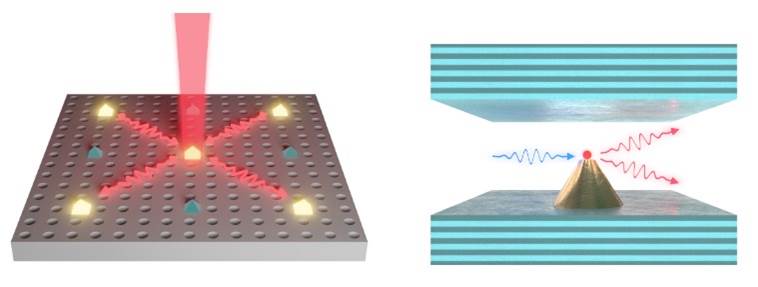
The ability to efficiently process large amounts of data and information is becoming one of the cornerstones of our society. For that reason, the improvement of our computational capabilities is one of the main challenges faced by information technologies. Quantum computing holds the promise of a solution to this challenge. Exploiting ideas such as the superposition principle, a quantum device is capable of carrying out certain tasks with an exponential speedup, compared to a conventional computer. This disruptive potential has been recognized with large public funding programs and private initiatives. Thanks to this joint effort, quantum computers have evolved from a mere theoretical idea to a maturing technology.
Despite those advances, there are still huge challenges to be addressed before quantum computing becomes a truly disruptive technology. At the level or implementation (hardware), existing quantum computers still have a moderate size and serious scalability issues, as well as limitations in the speed with which they can carry out quantum operations. Also, quantum error correction requires a large overhead in terms of physical resources, which we are unlikely to achieve in the near future. For that reason, we also need to develop quantum algorithms (software) that work on imperfect, noisy, systems, such as those that we expect to be able to fabricate in the next decade. It is thus necessary to explore the capabilities of new experimental paradigms that overcome the current limitations. In that sense, nanophotonic systems offer vast possibilities for the control of quantum matter and light, with a huge potential to overcome current issues in quantum information processing.
This is a multidisciplinary project that will combine the capabilities of the two participant groups, which are experts in theoretical nanophotonics (UAM) and quantum technologies (CSIC). We will develop quantum processors based on nanophotonic systems which will allow to overcome the limitations of size and speed of current experimental platforms. In particular, our designs will exploit the control of light at the nanometer scale to couple quantum bits in way that is robust, fast, and versatile. On top of that, we will study who to use those systems to generate quantum light, such that the emitted photons can play the role of quantum bits, or be used in precision measurements. In parallel to that, we will develop quantum algorithms that are specifically designed to be executed on nanophotonic computers.
Nano-Óptica Cuántica de Transformación
- Beca Leonardo a Investigadores y Creadores Culturales
- Funding agency: Fundación BBVA
- Duration: November 2019 – October 2021
- Principal Investigator: A. I. Fernández-Domínguez
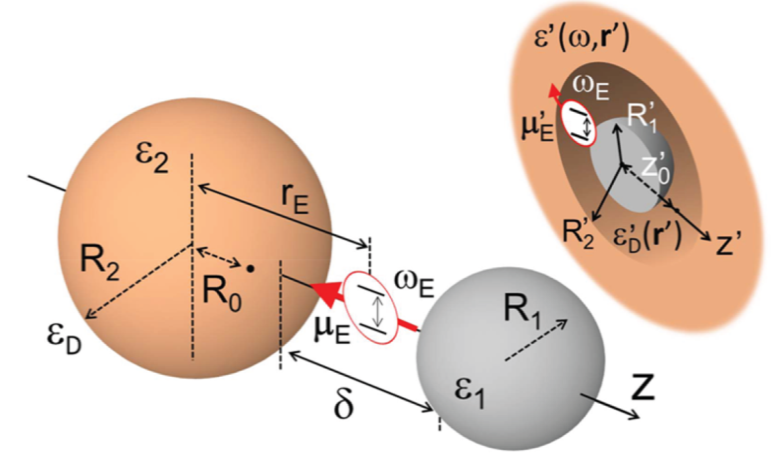
Hoy en día, la comunidad científica considera aceptado que los fotones (cuantos de luz) van a jugar un papel fundamental en las incipientes tecnologías cuánticas. Esto ha despertado un gran interés en la generación y la manipulación de la luz a un nivel cuántico. Sin embargo, la ubicuidad de los fotones hace que esta tarea requiera de su acoplo con la materia. Diferentes plataformas se han propuesto para tal efecto. Debido a que comparten dos características propias del avance tecnológico moderno (la miniaturización y una creciente velocidad de operación) los dispositivos nano-ópticos han despertado mucha atención en los últimos años en este contexto.
Este proyecto se propone aplicar la teoría de la óptica de transformación a la descripción de dispositivos nano-ópticos cuánticos. Esta técnica ha hecho posible el tratamiento puramente analítico de fenómenos nanofotónicos clásicos (en oposición a cuánticos) en el pasado, permitiendo un nivel de entendimiento imposible mediante métodos numéricos. Así, el objetivo general será la descripción puramente electrodinámica de estos sistemas físicos mediante la óptica de transformación. La extensión de esta herramienta teórica más allá del límite cuasi-estático se realizará sin sacrificar su carácter analítico, lo que es imprescindible para realizar una caracterización completa de la luz emitida por dispositivos nano-ópticos cuánticos. El proyecto incluye además dos objetivos específicos que permitirán testar la validez y la potencia de la teoría electrodinámica y analítica desarrollada en el objetivo general.
Quantum Polaritonic Technologies
- QPOL-TECH – Proyectos de I+D+i RETOS INVESTIGACIÓN
- Funding agency: Ministerio de Ciencia, Innovación y Universidades
- Duration: January 2019 – September 2022
- Principal Investigator: Johannes Feist and A. I. Fernández-Domínguez
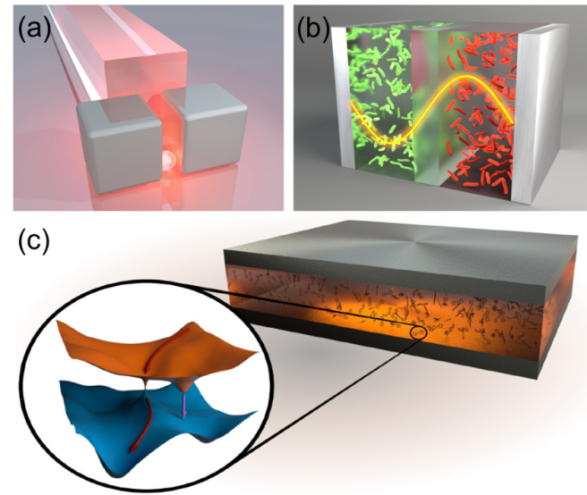
QPOL-TECH aims to investigate theoretically and design technologically-oriented strategies to exploit light-matter strong-coupling phenomena with the general objective of using one of the polariton constituents as the tool and probe for the manipulation of the other one through their hybridization and mixture. Different photonic (dielectric, plasmonic and hybrid cavities) and material (microscopic and macroscopic ensembles of organic excitons) platforms will be considered for specific applications. Therefore, the project combines a number of theoretical backgrounds, perspectives and approaches and applies them to three areas of great fundamental and applied relevance:
- Photonics, where the project pursues devising quantum light sources exploiting the interactive (material) character of polaritons; - Materials Science, where QPOL-TECH aims to enhance and optimize material properties through the optical dressing of excitonic and vibronic excitations; - Chemistry, where the objective resides in modifying the structure and dynamics of relevant molecules through vacuum light.
Classical and Quantum Description of Light-Matter Coupling
- CLAQUE – Proyectos de I+D+i RETOS INVESTIGACIÓN
- Funding agency: Ministerio de Economía
- Duration: January 2016 – December 2019
- Principal Investigator: A. I. Fernández-Domínguez and Elena del Valle
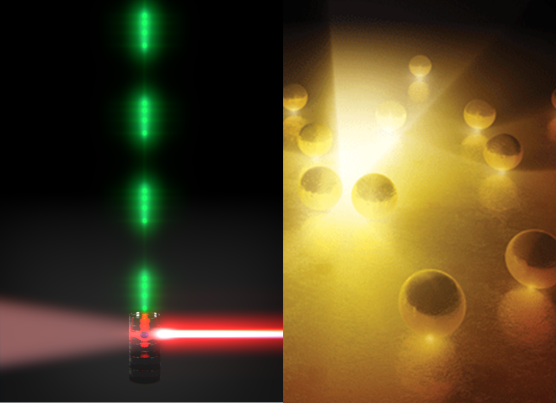
The enormous growth experienced in the last century by all the areas of optics was driven by the fact that the energy of visible photons lies within the energy range of electronic and vibrational transitions in matter. This makes photons ideal probes of nature at all length scales: from intergalactic to interatomic distances. This pervasive character of light made it a key instrument for many of the most influential scientific and technological advances of the last few decades. The ubiquitous nature of photons inherently implies a serious fundamental drawback: they interact very weakly with matter at a microscopic level. CLAQUE brings together complementary expertises in the physics of light to break new grounds in the interaction of light with matter in two emerging areas—nano and quantum optics—that overcome this apparently inviolable constrain.
Nano-optics deals with the concentration of light beyond the diffraction limit of classical optics, which has made possible enhancing light-matter interactions at the nanoscale. We will exploit the peculiar fashion in which electromagnetic fields transform under geometric operations to shape them at deeply sub-wavelength spatial regimes. We will also explore sub-wavelength photon manipulation at lower frequencies. Specifically, we will investigate strongly hybridized localized surface infrared modes to increase the radiative heat transfer efficiency between objects separated by near-field distances. Finally, we will focus on electron-photon coupling phenomena which are inherently beyond the realm of classical electromagnetics.
Quantum optics focuses on the striking physical phenomena that occur when involving only a few and strongly correlated photons, situations inaccessible until very recently from both theoretical and experimental perspectives. We aim at tuning the type and optimize the strength of photon correlations by spectral filtering of the source in a process akin to distillation. We then use such dynamical correlations as a quantum input to excite or probe various targets. On the one hand, we analyse new paradigms of optical spectroscopy based on quantum light excitation. On the other hand, by studying dynamical quantum interferences, we propose applications for quantum information processing by dynamically feeding circuits with source outbeating classical lasers. Strong from these complementary approaches, the project culminates with the proposal and design of new quantum nano-optical devices that emerge from the synergic combination of both scientific areas, namely, hybrid nano-antennas for tailored quantum light sources.
Mesoscopic Plasmonics
- MESOPLAS – UAM Internal Project (Previous FP7 Marie Curie Career Integration Grants)
- Funding agency: FP7 Marie Curie Career Integration Grants
- Duration: February 2015 – January 2019
- Principal Investigator: A. I. Fernández-Domínguez
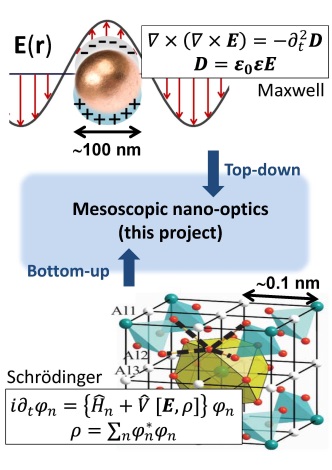
The boost experienced by nanophotonics research during the past decade has been driven by the ability of surface plasmons to collect and concentrate light into deeply sub-wavelength volumes. It has been possible due to two factors: the high precision of modern nanofabrication and characterization techniques, and the extraordinary predictive value of classical electrodynamics. However, the miniaturization trend in experimental nano-optics is currently approaching dimensions comparable to the typical Coulomb screening length in noble metals (of the order of a few angstroms). A theoretical challenge arises in this spatial range as macroscopic electromagnetism breaks down due to the emergence of quantum effects such as spatial non-locality.
The objective of this project is to fill the gap between Maxwell’s equations and first principle condensed matter theory methods. It aims to devise a mesoscopic platform able to treat accurately and efficiently the interaction between light and matter in nanodevices which, presenting angstrom-sized geometric features, contain millions of electrons. This is a prominent fundamental problem with significant technological implications. The further development of nanophotonic technology requires a complete and unified picture of the physical mechanisms behind its performance. The ultimate goal of this proposal is providing the theoretical framework for this purpose.